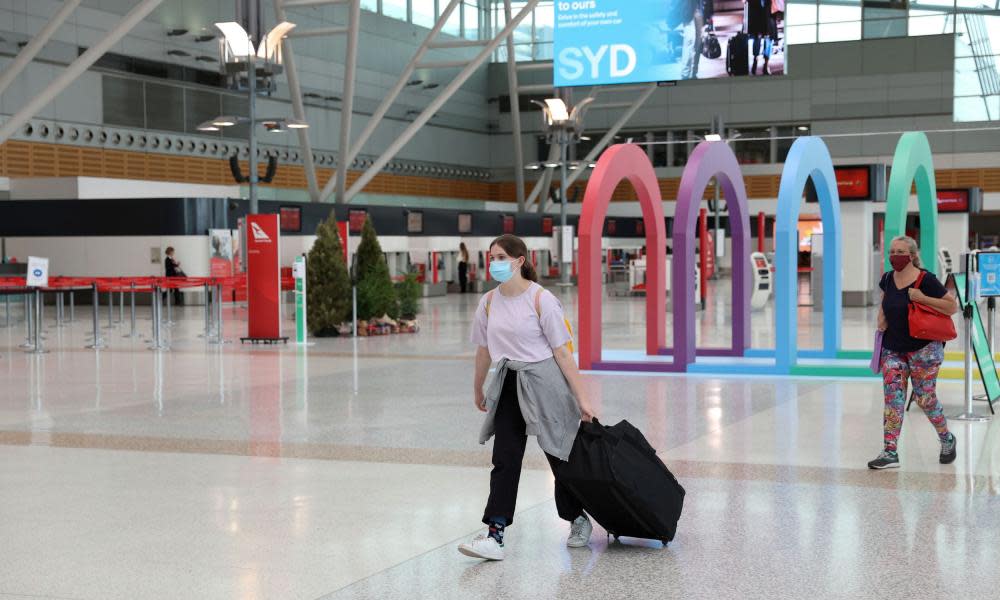Covid travel restrictions: where you can and can’t travel within Australia

As families prepare for winter school holidays, Covid outbreaks have once again raised the spectre of state border restrictions and flight cancellations.
State and territory health authorities are monitoring the cases and the situation is changing daily. Here is a state-by-state breakdown of where you can and can’t travel and what you need to do before you leave home.
default
Queensland
From 1am Saturday, people who live or have visited Waverley council area in Sydney’s eastern suburbs, are barred from entering Queensland, following the government’s decision to declare the area a Covid hotspot.
Greater Melbourne is also still a Covid hotspot, which means anyone who has been in the city in the previous 14 days will not be allowed to enter the state, except for a limited number of people deemed to be travelling for “essential purposes”.
If you are a Queensland resident returning from a hotspot, you will need to quarantine for 14 days at your own expense.
Everyone else will need to complete a travel declaration form up to three days prior to arrival to enter the state.
Western Australia
Every state and territory except Victoria is currently deemed “very low risk” by Western Australia’s government, which means there are no quarantine measures for anyone arriving from those states and territories.
Arrivals will still have to complete the mandatory G2G pass registration and declaration, as well as completing a health screening on arrival.
Travellers arriving from Victoria will need to quarantine for 14 days, either at a suitable premise or at a government-approved quarantine facility, which arrivals will need to pay for. Victorian travellers will also need to complete the G2G pass registration and declaration.
Despite the outbreak in Sydney’s eastern suburbs, New South Wales’s status has not changed and Sydney residents are free to travel to WA. However, anyone that has been to an exposure site is barred from entering the state. WA premier Mark McGowan said on Thursday authorities were carefully monitoring the situation and would reimpose a hard border if deemed necessary.
New South Wales
Arrivals to NSW – except those from Victoria – do not require a permit.
Travellers from Victoria will need to complete a travel declaration within 24 hours immediately before you enter NSW, or on entry. Anyone who has been to a venue of high concern (listed here) must follow testing and self isolation requirements.
Australian Capital Territory
Anyone arriving from NSW or Queensland must check the close contact and casual contact exposure locations (listed here). Anyone who has visited a close contact exposure location cannot enter the ACT without an exemption. Anyone who has visited a casual contact location must complete a self-declaration form, and isolate until a negative test result.
Anyone arriving from Victoria must complete a declaration form within 24 hours prior to arriving, and follow the same rules on casual and close contact exposure locations as NSW and Queensland.
Travellers from all other states and jurisdictions can travel freely to the ACT.
Victoria
All travellers from anywhere in Australia must apply for a permit to enter Victoria.
Anyone arriving from Sydney must also self-quarantine, get a Covid-19 test within 72 hours of arrival and remain in self-quarantine until a negative test result is received.
South Australia
South Australia on Sunday joined Queensland and imposed an immediate ban on travellers who have been in Sydney’s Waverley Council area. Travellers from elsewhere in NSW, who have attended a Covid case location at the specified date and time on the NSW government’s website are not permitted into the state.
South Australian residents or anyone escaping domestic violence can enter, but will still need to self-quarantine for a fortnight.
All travellers coming to South Australia must complete the Cross Border Travel Registration form prior to their trip.
People from greater Melbourne are not permitted to enter SA at all, while people from regional Victoria must get a Covid test on day one and must self-quarantine until a negative result is received.
Northern Territory
All interstate arrivals to the Northern Territory must fill in a border entry form.
Anyone deemed a close contact by the NSW government must undertake 14 days of quarantine in their home or at a suitable place. Any casual contacts must isolate, get a Covid-19 test and remain in self-quarantine until a negative test is returned. The same directions apply to those coming from Queensland.
Travellers from greater Melbourne must undertake 14 days of mandatory, supervised quarantine at the Howard Springs quarantine facility.
Tasmania
As with other states and territories, all arrivals into Tasmania must provide their contact and travel details before entering the state.
Anyone who has been in metropolitan Melbourne in the previous 14 days will not be allowed in the state, but those from regional Victoria are free to travel to Tasmania.
Anyone who has been to an exposure site in NSW, ACT and Queensland are not permitted to enter the state.

 Yahoo Movies
Yahoo Movies 
